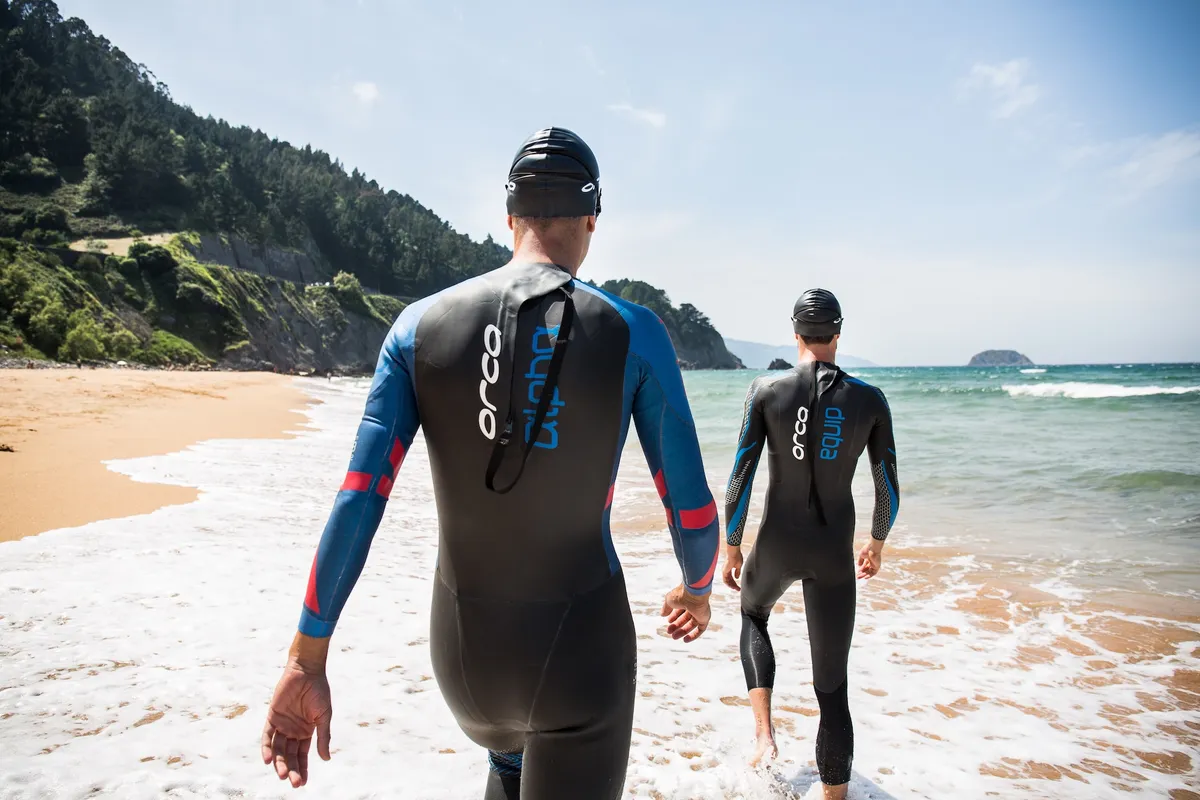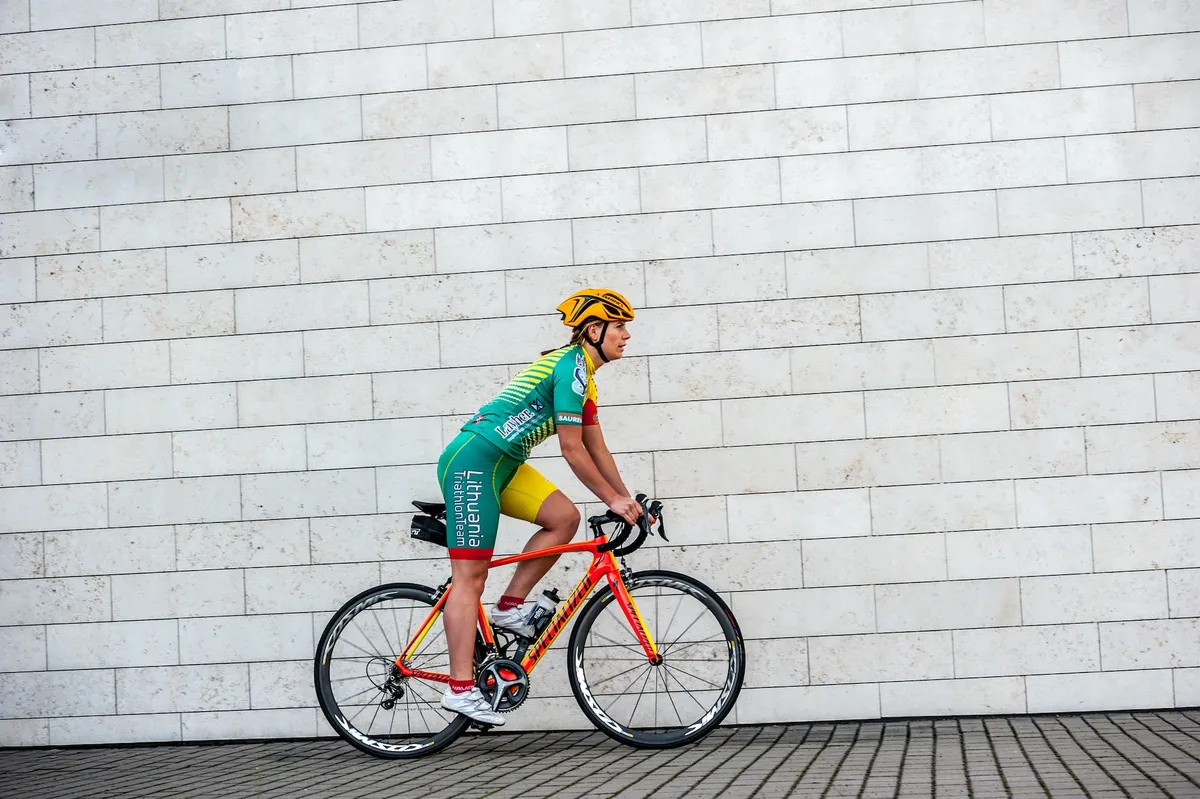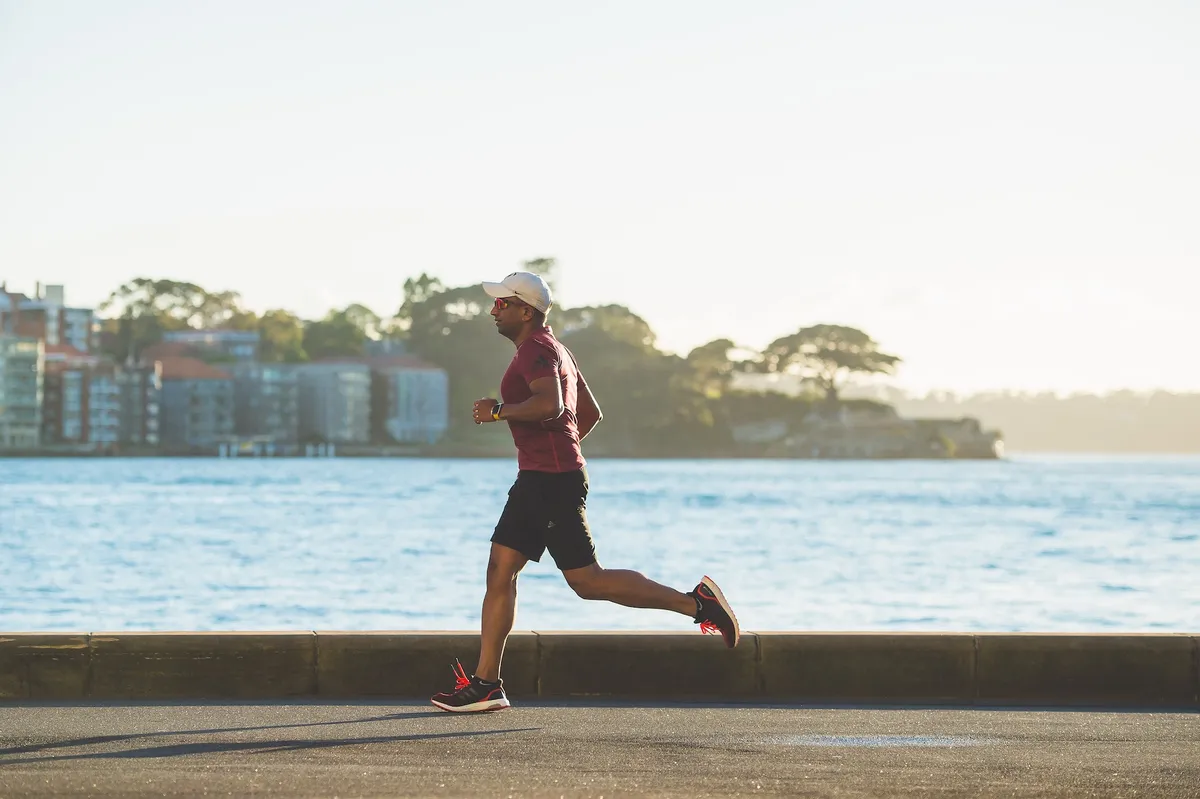Race-day looming? Then now’s the time to start thinking about all the little things that can add up to make a big difference come race day. We’re talking kit and transition considerations, how to sight, pace and manage jelly legs, fuel…
The experts
Nick Beer is a former British elite now practising as a reconditioning performance coach to ensure athletes become stronger, fitter and more confident than before.
Jane Hansom is a long-distance age-grouper who’s coached by Brett Sutton. She’s consistently podiumed in every Ironman she’s ever started, inc. two silvers and one gold at the IM Worlds.
Three-time Norseman Xtreme Triathlon champion Allan Hovda started triathlon at the age of 23. Allan has also won Swissman and IM 70.3 Haugesund.
Pre-race
01. Give yourself plenty of time before the race to learn the transition flow and where the entry and exit points are. Allow time to see the swim route and take a mental picture of the course. This will help to visualise the best line and account for potential directional issues. NB
02. I always wear old socks or cheap flip-flops that I can throw away at the start line to walk to the swim start in. My feet get so cold and I need to keep them as warm as I can before I enter the water. JH
03. Have all your kit, nutrition and equipment ready and in good working order. If you raced last year, check for any tears and nicks on your wetsuit and race tyres. Don’t try anything new on race day is classic advice, and it’s still as relevant as ever! Have a plan for technical issues on the bike, like a flat, and practise how to fix it. AH
04. As the race starts to get closer, stresses and energies from other competitors increase. This could cause a rush of negative thoughts and the prospect of racing could feel overwhelming. It’s important to take control of your emotions: focus on slow controlled breaths, keeping your heart rate low and staying relaxed. NB
05. Being stressed out because of a time crunch is one of the worst ways to start a race, but the best thing about it is that it’s completely avoidable! Plan in enough time, especially if you’re new in the game. AH
06. Often you’re put in a pen for 20mins and can get thirsty. Always take a quarter bottle of water to the start line to drink or clear your goggles with. You’d be amazed at how many people ask if they can have some! JH
The swim

07. Befriend a local fisherman or surfer before the race. These guys understand the currents and their advice could inform everything you do on race day. From where you start (left or right), to where in a river you swim (in the middle or close to the bank). A surfer friend of mine who’s a terrible swimmer regularly exits the water in first place in river races as he understands current. JH
08. Practise a beach running start. If the water is shallow it’s faster to run if you can lift your legs over the surf. Decide when to dive in – then do small dolphin dives until you’re deep enough. JH
09. Know yourself – and pick your strategy accordingly. If you’re among the slower swimmers and not super comfortable ‘fighting’ in the water, place yourself further behind and on the sides. If your swim speed is good and you have high ambitions for the time, then being in front will get you to transition faster (if you can keep up!). AH
10. Incorporate regular sighting into your swim stroke, so you don’t deviate off course and can maintain your line. For example, breathing every first and sighting every third breath. Practise this in training as it’s important not to disrupt your stroke, so you can still retain the momentum while swimming. NB
11. Don’t hug the buoys – it could add metres to your overall swim, especially if they’re all in a straight line. Instead take an overall view of the course and try to take that line instead. JH
12. Pace yourself! The swim usually feels easy… at least the first 50m does! Going out too hard is very common and will severally reduce your ability to swim your maximal sustainable pace for the last quarter of the race. It’s easy to get caught up in the adrenaline-filled start, but try holding back just a bit for the first few minutes and see how you start passing other swimmers quickly. AH
13. When we turn at the buoys it’s easy to lose speed and efficiency in our stroke. Accelerate in and out of the buoys by upping the stroke rate and kicking your legs faster. This will enable you to settle into your tempo pace quicker and prevent stalling around the turn. NB
14. Be flexible - while the bike and run in long-distance triathlon is more a game of hitting as even an intensity as possible, the swim is different. Being on someone’s feet is a major advantage, but it sure can be difficult in a race situation. Be flexible on staying behind ‘the best’ feet possible. That may mean that you have to do small or big surges to close a gap, or switch to better feet to draft off. AH
15. With the swim course almost completed, it’s time to prepare for the next section. Our legs have a habit of floating along as the upper body plays a significant role. Think about increasing the frequency of your leg kick to accelerate blood flow to the legs to wake them up! NB
Swim-to-bike (T1)
16. In wetsuit races, before you exit the water pull the neck of your suit forward to get some water down the front. It makes the suit come off more easily. JH
17. When organising your kit in transition, it’s important that it doesn’t get in the way. Try to place bike shoes (if not attached), helmet and additional bike kit on the side where you approach first from the swim. This will help avoid any unforced errors that could slow us down. NB
18. Practise and visualise the transition until the point that your movements are automated. Know where to run up, where your transition bag is, what’s in the bag and the order you’re doing the necessary tasks. AH
19. If you’re doing a race with bags for each discipline, such as Ironman, put your helmet in your bike bag as you can put it on when running to your bike. JH
20. Aim to strategically angle the front wheel to point in the direction of the transition flow. It’s not uncommon for the wheel to veer off course when we frantically grab the bike. Having the front wheel placed in the correct direction will reduce unnecessary bike manoeuvring and eliminate delays. NB
21. Keep it simple! I recommend having a minimalist approach to transition. Have as few things and tasks as possible. Many people put way too many things in their transition bags ‘just in case’. Personally, I believe that’s not a wise strategy as it leaves you having to make decisions while in transition when your mental capacity is already maxed out. AH
22. Practise getting on the bike while running. The ‘postman’s scoot’ is the best way for me. Put your left foot on your left pedal and then swing the right leg over (making sure you clear the rear bottle cage or you’ll end up on your ass!).
The bike

23. Ride a few hundred metres after the mount line before putting your feet in your shoes to give you more space and momentum. I often ride up to a kilometre to get me clear of the ‘danger’ zone. JH
24. You’ve jumped on your bike, shoes clipped in, feet firmly secured and now you’re ready for the bike discipline. Plan to immediately accelerate for around 10secs, either in or out of the saddle. This ballistic effort will fire up your legs, flush the swim away and fully engage them to ride hard. NB
25. Pace yourself. For age-group triathletes, optimal performance lies in even pacing. The longer the race the more important the pacing becomes. If you have a power meter, that’s a great way to adjust your power to the pedals, if you’re able to follow your (hopefully realistic) watt plan. You didn’t turn into Lionel Sanders overnight, so there’s no need to start riding like him! If you don’t have a power meter just go on feel, and it should feel easy to start with. AH
26. Have a nutrition plan and follow it - nutrition intake is highly individual and trainable. Having a plan and following it as best you can is wise advice for everyone – 300 calories of carb intake each hour is a good baseline, and if your stomach can absorb more you can increase your intake goal. Personally, I can’t handle sports drinks, but can eat/drink gel all day long. For other people it might be the other way around. Find out what works for you, but remember to have a plan and stick to it. AH
27. Once settled into your riding, it’s important to relax and hold your position. Try and limit excessive movement when riding – one common culprit for this can be when consuming nutrition. Attach your nutrition to a reachable spot, which requires minimal movement to access. NB
28. Hold a neutral head position. A nodding head can disrupt your riding and decrease your aerodynamics. Aim to look around 8/10m in front of you. This will help keep your eyes on the road when consuming nutrition, stay safe
and allow you to have constant eyes on other competitors. NB
29. Position one gel so that it’s easily accessible and have it as soon as your shoes are on, then front load your eating in the first half of the race. Chowing down more calories early on will set you up nicely. I always enjoy the picnic on the first quarter of the bike! JH
30. Stay aero! A common sight is age-groupers riding a super aero TT bike, expensive deep-profile wheels and aero helmet, and then sitting upright cycling! The first three things improve aerodynamics and the last one ruins the effect of them all, so stay aero as much as possible. If you can’t, then you should have a bike fit and work on your position. Riding like that should not be painful. AH
31. If you must pee on the bike, then use any descents to do so, especially in the last 5k before T2. Make sure you don’t pee on any fellow competitors, though (even if they’re rivals!) – and do it out of sight of marshals, race referees and spectators
Bike-to-run (T2)
32. As you enter T2, remembering where you racked your bike among all the others can be challenging and an opportunity to lose time. Having a piece of brightly-coloured kit, for example running trainers, drink bottles or a towel, that easily stand out, could help you find that transition spot much quicker. NB
33. The same rules apply in T2 as T1. Keep it simple and only fill your transition bag (if you have one) with the things you’re going to use. AH
34. Plan to have your run shoes placed favourably in the direction of the ‘run out’ exit. When you rack your bike, focus on putting the bike on the inside of your run kit. This will help reduce any unwanted trips or falls as you frantically dash towards the exit. NB
35. With anything over an Olympic distance I take the time to put socks on and add sunscreen on my forearms. On a hot run course like Lanzarote, for example, this will save your ass and in the overall scheme of things a few extra seconds are nothing. You’ll get the time back if you feel comfortable on the run. Guaranteed! JH
36. Be brief. Doing a fast transition sounds like obvious advice, but most athletes unnecessarily lose valuable minutes. I understand that it’s tempting to have a short rest in transition, but those seconds or minutes are much more valuable out on the run course. AH
37. Don’t rush out of T2. Regroup. Ask yourself, ‘Have I got everything that I need?’ Smile. You’re alive. You’re fit. You’re privileged to have been able to get this far, so be thankful. Smile again. Thank the volunteers. Then run like the (perfectly paced) wind! JH
The run

38. Tired legs off the bike can affect our run performance mentally and physically. A good trick to overcome this barrier is to accelerate out of transition slightly faster than race pace for around 150m/200m. But don’t go full gas as it’ll come back to haunt you very quickly! NB
39. Start conservatively - in a full Ironman-distance race with multiple laps I often get passed by age-group athletes on the run, even if I hold 4min/km pace. I’ll then pass them later on at a much lower pace, and see them walking when I’m on my last lap and they’re not even half way! Start relatively easy, and if you still feel good after halfway try to increase the speed. AH
40. Scattered around the course are feed stations. Use these little and often to keep your energy topped up as there’s no telling how your body will respond to the demands of the distance and the race. Practise in training first, in case of any GI distress when you run. NB
41. Once settled into the run, focus on keeping a high cadence, not to over-stride and hold a good run posture. As fatigue develops, it’s easy to become sloppy with our technique. With good form, this can still save you energy and will help maintain efficiency. NB
42. Never EVER run through an aid station without eating and drinking. Food = calories = energy. Eat and you’ll keep on trucking. Don’t eat and you’ll run out of energy, slow down and eventually stop. JH
43. Don’t follow your gut feeling - when entering the latter part of the run it’s common to feel fed up of sweet gels and energy drinks. I often lose my appetite and want to stop eating, but this will cost you dearly afterwards. My rule of thumb is to follow my nutrition plan unless I start to vomit… Then turn to Cola as a last resort! AH
44. Crack open a gel in the approach to an aid station and wash it down with liquid from the stand to save time and maintain your run rhythm. JH
45. In hot races, wear a baseball cap and fill it with ice from the aid stations. Drop a few cubes down your pants, too. This works a treat to cool you down. JH
46. Know your why - why are you voluntarily putting yourself through all this discomfort? It’s in the last half of the run that your body will want to put an end to the ‘misery’ and stop. At this point, it’s very important to know the reason why you should continue. It can be all sort of reasons. Finding your limits, expanding your comfort zone, for a charity, impressing your partner or beating your neighbour. Whatever the reason, be sure to find it! AH
Post-race
It’s not all about the race – how you recover determines how well, and how soon, you’ll be able to return to full training. Here are 220’s top tips…
47. Refuel with something satisfying yet with a good balance of protein and carbs. In our mind, you can’t beat a bag of fish and chips after a big race, but find what works for you!
48. Hydrate sufficiently post-race, especially if it’s been a hot race. If it has to be beer, then check out Erdinger Alkaholfrei, which tastes pretty good but, as the name suggests, is alcohol-free and isotonic. They even sponsor a tri team.
49. Pull on some compression socks/tights. Not only will they help with recovery, but they make you look damn impressive walking around the event town!
50. Sleep is your friend, and if that means a nap as soon as you get home then do it! Take it easy in the days following the race, returning to training gradually, and schedule a massage for when the soreness has subsided.